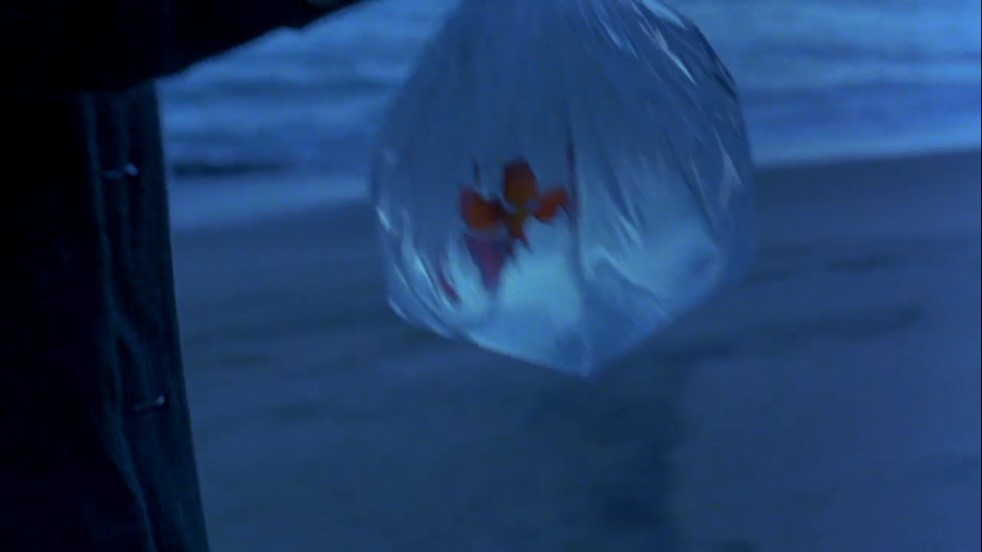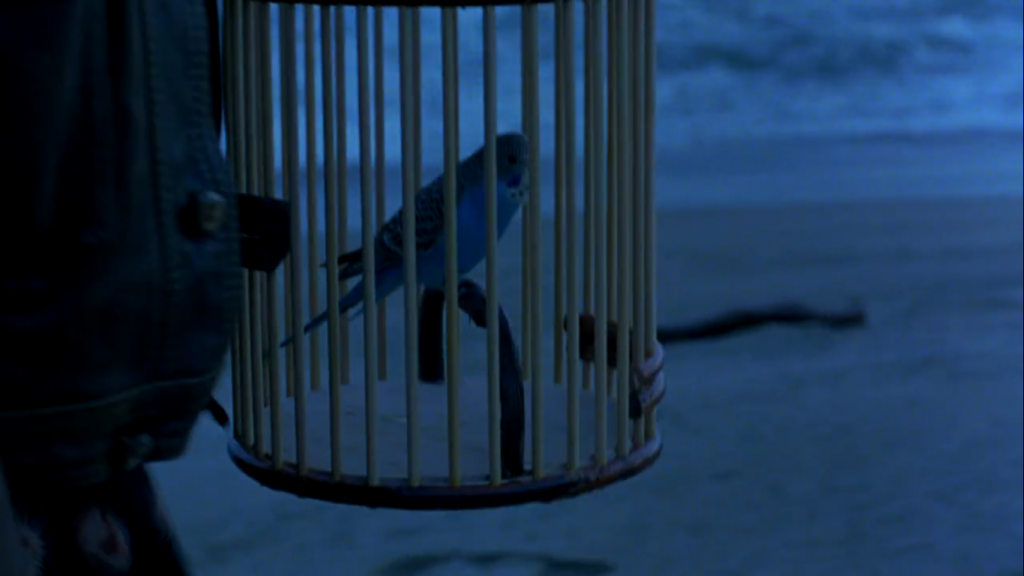The Craft is a 1996 supernatural teen horror film, in which animals feature heavily as a representation of the otherness felt by four teenage girls who possess extraordinary powers. The film presents witchcraft and magic as something that is inextricable from nature and animals, in line with Neo-Pagan traditions. This scene is particularly striking, as it encompasses the notion that each animal has been wrongfully removed from its natural habitat, a warning sign that their practices have gone too far.

Figure 1 
Figure 2
The four witches walk along the beach to prepare their ritual to invoke their deity Manon, in order for Nancy to absorb Manon’s power. Each girl holds an animal in some form of container: a clownfish in a bag, a butterfly in a jar, a bird in a cage and finally a snake in a jar. All four of the animals have been displaced from their natural environments, particularly the clownfish, which is rooted in the foreground of the shot, while the sea is visible in the background. In this scene the girls are walking parallel to the shore, which, for the captured fish, represents a permanent displacement from where it is supposed to be. For the clownfish, the sea is in view but always just out of reach. The use of colour in this shot blends the water on the shore with the water in the bag, but in the lower half of the shot, there is a clear distinction between the two. There is an excess of cold blue colour onscreen, creating a sense of foreboding as the evening draws in, emphasising the danger of the girls using witchcraft for their personal gain. The notion that the girls are working against nature rather than with it is exacerbated by keeping the bird in the cage. It rests on a perch, as if its natural urge to fly away is subdued. This physical entrapment can also be interpreted as the psychological entrapment felt by the slightly reluctant Sarah, foreshadowing the tension between her and Nancy.
Shortly after the girls’ ritual concludes, beached sharks and other dead sea creatures litter the shore, signifying the gravity of upsetting the order of nature. The constant movement of the waves on the shore contrasts jarringly with the stillness of the deceased animals, coupled with a wide shot of the whole beach which highlights the sheer amount of death that has taken place. The use of animals as part of their ritual encompasses the disposability of animal life in comparison to the importance of personal gain.
In this ritual, Nancy subverts the order of nature and disregards the consequences of her attempt to gain power and control. She sees the animals washed up on the shore and remarks ‘it’s so beautiful’ (Fig. 3), assuming this to be a sign that the girls’ ritual has been successful. Her disturbing response upon seeing the dead animals around her epitomises both the permanence of the animals’ displacement from their natural environment, and Nancy’s displacement from the other girls, as she has taken their practice beyond the point of no return.
References:
The Craft, dir. by Andrew Fleming, (Columbia Pictures, 1996).